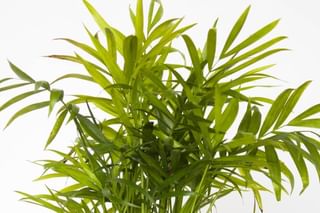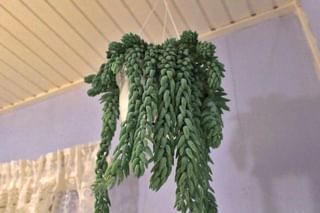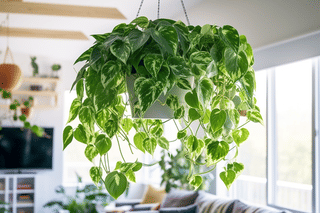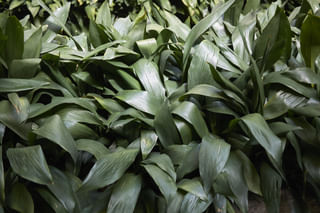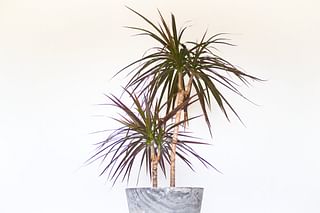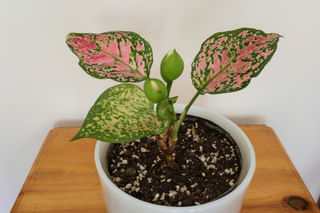The 10 best low-light houseplants for beginners
Low-light plants are amazing plants that don't require as much sunlight exposure as other plants, while they can still thrive. Low-light plants, however, are often overlooked as being low-light plants. Especially as a beginner, others will tell you that plants need sunlight to grow. In this post, we're going to highlight 5 beginner-friendly and low-light loving plants.
Low-light plants are amazing plants that don't require as much sunlight exposure as other plants, and they can still thrive. Low-light plants, however, are often overlooked as being plants that grow well in very little sunlight. Especially as a beginner, others will tell you that plants need sunlight to grow. Now, it is true that all plants need some light to grow, but there are a few that do just as well in low-light environments.
The low-light houseplants that we're going to explore in this post are the following:
There are many, many more plants that do well in low-light situations. But I've taken care of all of these houseplants in low-light environments, so I can help you make these plants thrive a little better. With this plant care guide, you can move these plants to places in your house that don't get enough light for most other plants and help them thrive.
Sansevieria Trifasciata (Snake plant)

One of the most recognizable houseplants, the snake plant, is an amazing houseplant in low-light areas in your house. The Sansevieria can also grow in direct sunlight, where it grows much more quickly. When you move a Sansevieria to a low-light place, it will seem like it's frozen in time. Its growth will slow down to a crawl. But it will still do well and this won't harm the plant. If you're okay with keeping your snake plant the same size, you can move it from a well-lit area to a low-light place.
You can learn more about taking care of a Sansevieria in this guide: Sansevieria.
Zamioculcas Zamiifolia (ZZ Plant)

Simple, yet elegant. The Zamioculcas Zamiifolia looks like a boring plant from a distance, but when you get up close, you'll see how beautiful this houseplant is. The ZZ plant is a low-light-loving plant. In fact, low-light environments are one of the only places it can grow without any problems. When you expose a ZZ plant to too much sunlight, it gets sunburns all over its stems. This plant is made for low light places.
As a bonus to being able to thrive in low light, the ZZ plant is also very low-maintenance. You can forget to water a ZZ plant for weeks at a time. The plant stores a lot of moisture in its stems and roots, and doesn't need to be watered very often. It's the perfect plant for a low-light spot you forget about. The ZZ plant turns this spot into a green and air-purifying spot, without much help from you or the sun.
You can learn more about taking care of a ZZ Plant in this guide: ZZ plant.
Spathiphyllum (Peace Lily)

One of the most well-known low-light houseplants is a Peace Lily. It's a houseplant that thrives in low-light places, and it can survive almost anything. A Peace Lily also shows you when it's not happy, which makes it a great beginner-friendly houseplant.
A Peace Lily, like a ZZ plant, is a houseplant that's made to thrive in low-light areas. When you expose a Peace Lily to too much sunlight, its leaves will fade to light green and/or yellow. Normally, the Peace Lily has dark green leaves. These leaves are dark green because they don't need to absorb as much sunlight. When you've kept your Peace Lily in a dark place for a while, all new leaves will have this dark green color.
The difference between the ZZ plant, the snake plant, and the Peace Lily is that the Peace Lily needs a bit more maintenance. It loves to be in moist soil at all times, so you'll have to water it every week or every two weeks. The soil can dry out, but not for more than a few days.
Make sure to check the moisture levels of the soil every few days to make sure it's still at the right level. You can do this by touching the top inch of the soil with your finger. If it's still moist, it's perfect. If it's dry, add water to the soil until it drains out of its pot.
You can learn more about taking care of a Peace lily in this guide: Peace Lily.
Parlor Palm
Another plant that's made to thrive in low-light places is the Parlor Palm. Unlike many other palms, the Parlor palm doesn't like to be in bright places. Like the Peace Lily, the bright places will turn the green leaves on your Parlor palm to light green and sometimes even yellow. The Parlor palm is also very sensitive to direct sunlight. Your Parlor palm gets sunburns quite easily if it is exposed to this direct sunlight.
Your Parlor palm requires some level of sunlight exposure, so don't put it in a place that never gets any sunlight.
You can learn more about taking care of a Parlor palm in this guide: Parlor palm.
Sedum Morganianum (Donkey Tail)
The Sedum Morganianum is an odd one out compared to a lot of other succulents. Most succulents need direct sunlight all the time to be happy. However, this Sedum is different. It can grow in darker places as well. Much like the Sansevieria, it grows much more quickly in a bright spot. In darker places, their growth will come to a halt, but it won't do any harm to the plant.
A Sedum Morganianum is a very low-maintenance hanging plant that you can forget about for a month or two. The plant will survive this without any problems. If you're looking for a houseplant that you can give a little more attention to and water more often and still does well in low-light situations, a Peace Lily might be a better choice for you.
You can learn more about taking care of a ZZ Plant in this guide: Sedum Morganianum.
Pothos
This low-maintenance houseplant is perfect for beginners, as it can thrive even in low-light environments. Pothos plants are known for their trailing vines and variegated leaves, making them a beautiful addition to any space.
A Pothos plant is extremely adaptable when it comes to sunlight exposure. While it's capable of growing in a variety of lighting conditions, it does particularly well in low-light areas. This is what makes it an excellent choice for spaces that don't get a lot of natural light.
However, it's important to note that while Pothos can survive in low light, its growth might slow down. An ideal spot for this plant would be where it receives indirect, medium light. Too much direct sunlight can cause the leaves to turn yellow, so it's best to avoid placing it in front of a south-facing window.
If you're interested in knowing more about how to care for a Pothos plant, be sure to read my comprehensive guide. It's packed with helpful tips and advice to help your Pothos thrive, even in low-light conditions. Check it out at How to care for a Golden Pothos.
Spider plant
Another low-maintenance option, spider plants are resilient and can tolerate indirect light. They also have air-purifying qualities, which makes them a great choice for keeping the air in your home fresh and clean.
The Spider plant prefers bright, but indirect sunlight, making it another fantastic choice for low-light conditions. While it can tolerate direct sunlight in doses, too much direct light may scorch the leaves, causing them to turn brown. I recommend placing your Spider plant in a spot where it can receive filtered or diffused light. Despite being a low-light plant, it's important to remember that it still needs some sunlight for photosynthesis, so a spot with no sunlight at all won't be very good for its health and growth.
Interested in learning more about this fantastic, low-light-loving Spider plant? Head over to our comprehensive guide at How to care for a spider plant for all the care tips and tricks you need to help your Spider plant thrive.
Cast iron plant (Aspidistra elatior)
As its name suggests, the cast iron plant is extremely hardy and can withstand neglect, low light, and fluctuations in temperature. Its glossy, dark green leaves make it an attractive addition to any room.
The Cast Iron plant can thrive under low light conditions, making it an ideal choice for rooms with very little sunlight. While it can also tolerate brighter light, too much direct sunlight may cause the leaves to turn yellow or brown. This plant's ability to thrive in a wide range of light conditions makes this plant also a great choice for beginning plant owners or those of you living in spaces that don't have a lot of natural sunlight.
However, like all plants, it does require some light for photosynthesis, so ensure it receives at least indirect light for a couple of hours a day for optimal growth.
Eager to learn how to ensure your plant thrives under your care? Visit our comprehensive guide on How to take care of a Cast Iron Plant (Aspidistra elatior) for all the tips and advice you need. Happy planting!
Dracaena
While some varieties of dracaena require bright, indirect light, there are a few that can thrive in low-light conditions. The Dracaena marginata, for example, has long, spiky leaves that add a bit of drama to any space.
The Dracaena marginata is quite adaptable when it comes to light conditions. It can survive in low-light situations, making it a great choice for parts of your home that don't receive a lot of sunlight.
Still, it's important to remember that while it can handle less light, it grows best when it gets medium, indirect light. Too much direct sunlight can cause the leaf edges to burn and turn brown. So, if you can, try to place your Dracaena marginata in a spot where it will receive plenty of filtered or diffused light.
Interested in learning more about Dracaena and how to help it thrive in your home? For detailed care instructions and useful tips for keeping your Dracaena healthy and vibrant, visit our comprehensive guide: How to care for a Dracaena. Your journey to becoming a Dracaena expert starts here!
Chinese Evergreen (Aglaonema)
The Chinese evergreen is a slow-growing plant that can adapt to a variety of light conditions, including low light. With its vibrant green leaves and interesting patterns, this plant is sure to add a pop of color to any room.
The Chinese Evergreen is a highly adaptable plant that can thrive in various lighting conditions, making it an excellent choice for spaces with limited sunlight. However, it's important to note that while it can survive and grow in low-light settings, the color patterns on its leaves become more vibrant with slightly more light.
On the other hand, excessive direct sunlight can scorch the leaves, causing them to turn yellow. To keep this plant healthy and give its leaves more bibrant colors, it is best to provide medium, indirect light.
To find out more about the Chinese evergreen and how to take care of it, be sure to visit my comprehensive guide on How to care for an Aglaonema (Chinese Evergreen). This guide is packed with helpful tips and tricks to ensure your Chinese evergreen thrives in your care.
Can low-light plants be placed in direct sunlight?
Low-light plants are not limited to just low-light conditions. Many low-light plants can thrive in direct sunlight as long as they are gradually exposed to it.
However, it's important to note that most low-light plants can't handle direct sunlight, so it's best to research the specific plant before placing it close to a window. Some low-light plants that are known to do well in direct sunlight include snake plants and sedums.
When moving a low-light plant to direct sunlight, it's important to do it slowly. Start by placing the plant in a location with partial sunlight for a few hours a day. Gradually increase the amount of time the plant is exposed to sunlight until it can handle direct sunlight for several hours a day.
In direct sunlight, low-light plants will need more water as the soil will dry out faster. It's important to keep an eye on the plant for any signs of stress or damage, such as wilting or yellowing leaves.
How often should low-light houseplants be watered?
When it comes to low-light houseplants, it's important to strike a balance between properly hydrating your plant and overwatering it. Overwatering can lead to root rot and the death of your plant. How often you should water your houseplant depends on the type of plant and the soil it's potted in.
A good rule of thumb is to check the top inch of soil. If it's dry, it's time to water your plant. Finding the right amount of water to give your plant might take a little practice. Ideally, you'd use a pot with drainage holes so any excess water can escape the pot. Then you can water your plant thoroughly, making sure the soil absorbs the water. As soon as the soil has absorbed all the water it can hold, the excess will start to drain from the pot. A well-draining soil mix can also help to prevent water from pooling in the pot and lead to better plant health.
Remember, it's always better to underwater rather than overwater. Monitor the soil moisture level regularly and adjust your watering schedule as necessary.
Ideal temperature and humidity range
If you want your plants to be happy, it is important to provide an environment that has the ideal temperature and humidity range. For plants that thrive in tropical environments, a temperature range of 21 to 29 degrees Celsius (70 to 85 F) with a humidity range of 50-60% is ideal. This range allows for healthy photosynthesis processes and promotes the overall growth and development of the plant.
It is important to maintain consistent temperatures and humidity levels to avoid stress and potential damage to the plant. This can be achieved by monitoring and adjusting the climate using a thermostat and humidifier. You can also create ideal humidity levels by placing plants together or misting their leaves often.
By creating a warm and moist environment, your tropical plants will thrive and flourish.
What type of soil should be used for low-light houseplants?

When it comes to choosing the right soil for your low-light houseplants, there are a few factors you should consider.
First of all, a well-draining soil mix is crucial for the health of your low-light houseplants. These types of plants are very sensitive to overwatering, which can lead to root rot and other issues. To avoid this, choose soil that contains materials like perlite, peat moss, or coarse sand, which can help enhance soil drainage and prevent water from pooling. These materials can also help to improve soil aeration, which is vital for the roots to access oxygen and carry out essential processes.
Secondly, consider a soil mix that also includes organic matter like compost or worm castings. Organic matter is rich in nutrients that can help support your houseplant's growth and overall health. It also helps to improve soil structure and water-retention capabilities, ensuring your plant gets the moisture it needs, without the risk of waterlogging.
Remember, every plant is unique and may need a slightly different soil mixture. So, it's always a good idea to do some research on the specific soil requirements for your particular low-light houseplant.
Fertilizer requirements for low-light plants
If you have low-light plants, you may be wondering how often to fertilize them and which fertilizer to use. Luckily, these plant varieties are generally low-maintenance and don't need to be fertilized very often.
In general, low-light plants should be fertilized once every 1-2 months during their growing season, which typically runs from spring to early fall. You should stop fertilizing during the winter months when plants usually go dormant.
When choosing a fertilizer for low-light plants, it's important to go for a balanced, liquid fertilizer that's rich in nitrogen, phosphorus, and potassium (NPK). These are the essential macronutrients that plants need to thrive and grow.
Organic fertilizers or slow-release fertilizers with organic matter can also benefit low-light plants. They release nutrients slowly over time, making sure your plants receive a steady stream of nutrients without fear of fertilizer burn or toxicity.
When applying fertilizer, make sure to dilute it according to the instructions on the label to avoid over-fertilization. Over-fertilization can lead to root burn and other plant problems. Remember to dilute it according to the instructions on the label and avoid over-fertilization.
Pests and diseases
When it comes to low-light houseplants, it's important to keep an eye out for specific pests and diseases that can affect their health and overall appearance. Common pests that can affect low-light plants include spider mites, mealybugs, and scale insects, which can all thrive in low-humidity environments. It's also important to keep an eye out for fungal diseases such as powdery mildew and root rot, which can be increased by overwatering and poor ventilation.
To prevent pest and disease problems in your low-light houseplants, be sure to keep them clean and dust-free, provide adequate drainage to prevent overwatering, and maintain proper humidity levels. Also, regular inspections and treatment with natural insecticides such as neem oil can help to prevent infestations before they take hold.
Conclusion
Many plants can grow, if not thrive, in low-light places in your house. These amazing plants are often overlooked because they're not always the most exotic houseplants. They are, however, amazing plants that can brighten even the darkest places in your house. If you have a darker spot in your house that you want to improve with a plant, perhaps one of the 10 plants in this post is the perfect plant for you!
Thank you for reading this post! I hope it helps you to keep your plants healthy and beautiful! If you're looking for more guides on specific plants, you can always request a plant guide to get a guide for the plant you have trouble with.
Test your plant care knowledge
Quiz completed!
Want to learn more? Sign up for my newsletter to receive free tips in your inbox!
Sign up now!
